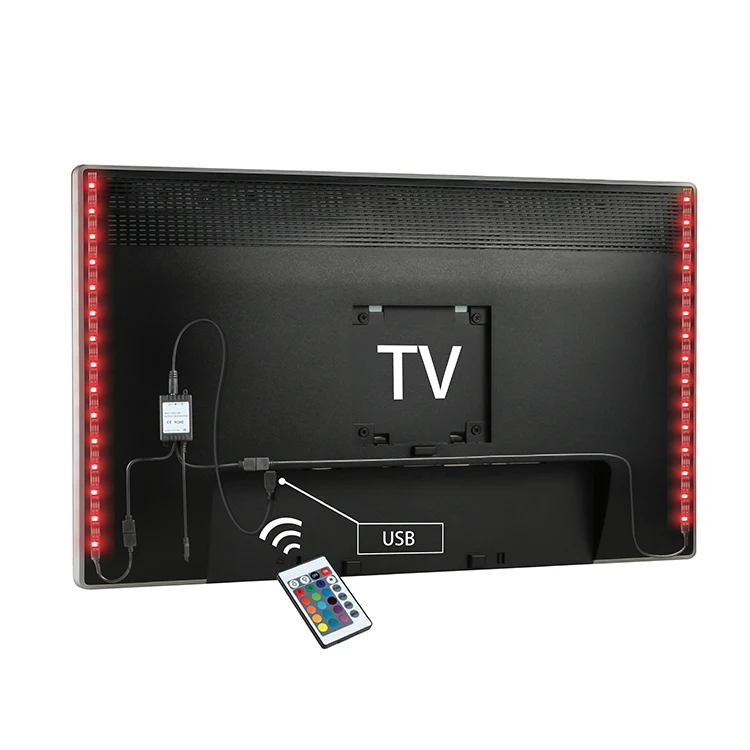

Light can be used to set a scene superbly, with Hue bulbs automatically matching the Ambilight LEDs on the set itself. Imagine the room's bulbs fading to green during a jungle scene, or blue while underwater in an episode of Blue Planet II.
#Ambient light behind tv tv
Pocket-lint Add smart lighting to further the effectĪ Philips Ambilight TV can also sync with a Philips Hue lighting system, so cleverly placed lamps and other interior lights can enhance the feeling of total immersion further. Plus, a 4K OLED TV with HDR displays colours with vibrancy and saturation never before seen in a consumer television, so when expanded with complementary lights from around the rear of the set, you get truly eye-popping results. The screen bezel almost disappears, widening the visuals in spectacular form. When combined with OLED screen technology, which allows for a super thin bezel like no other TV tech, the overall effect is spectacular. And if you use it in a darkened room, it is a completely immersive technology that has to be seen to be believed. Alternatively, you can set them to a single colour to give your living space a designer, up-market feel while watching TV.Īmbient light, in this sense, heightens the overall effect, while naturally drawing your eyes to the screen itself. The LEDs cast light onto the wall behind and change colour depending on the on-screen action, so rather than distract they turn your room into an extension of a show, sports event or movie. Sometimes they sport LED lights along two sides, sometimes three (left, right and top), but they always give you a wider viewing experience you cannot get with any other brand. Ambilight is unique to Philips' TVs and can be found on sets across a myriad of price ranges. Philips How Ambilight can improve viewingĮven in daytime, casting light around a television that matches the on-screen action significantly draws you into the picture. This is less relevant with an OLED TV, such as the Philips 55POS9002, thanks to its excellent, deep black levels and searing brightness, even in daylight conditions, but even then two picture setups are advised for the best experience. The pictures will look different at day and night, so consider two different setups per source one for day, one for night, The day setup, for example, will have brightness turned up a notch to counter sunlight affecting the visible contrast of a set. Daylight, for example, can make darker areas of a picture indistinguishable and you'll find yourself missing out on details if your room is too bright.Ī room's ambience should always be considered when calibrating a TV. The best viewing room is something that can be blacked out or dimmed even during daytime, ensuring that the visuals on screen are displayed at their best. At night, when you want to watch a show you will be glaring light directly onto the screen and, even with an excellent screen diffuser, you will find the reflection distracting. Similarly, do not place a standing lamp or lighting sconces opposite the TV.

And, if that's not avoidable, buy some black-out blinds or curtains. Don't, for example, hang your TV on wall directly opposite a window. When placing a TV in a room there are some tips you should keep in mind, some obvious, some not so.


 0 kommentar(er)
0 kommentar(er)
